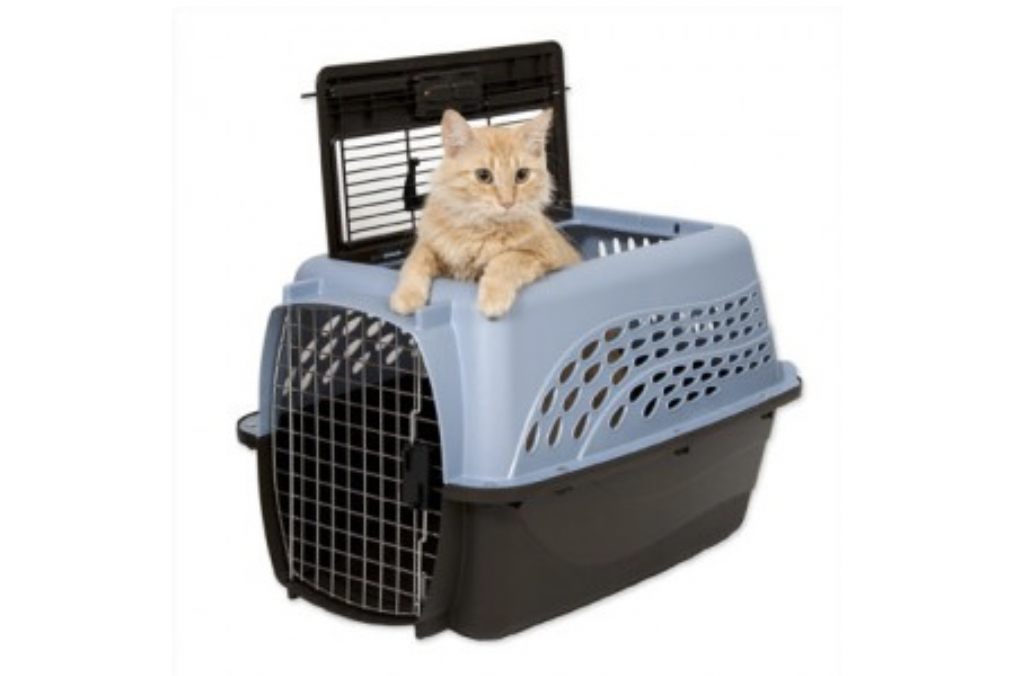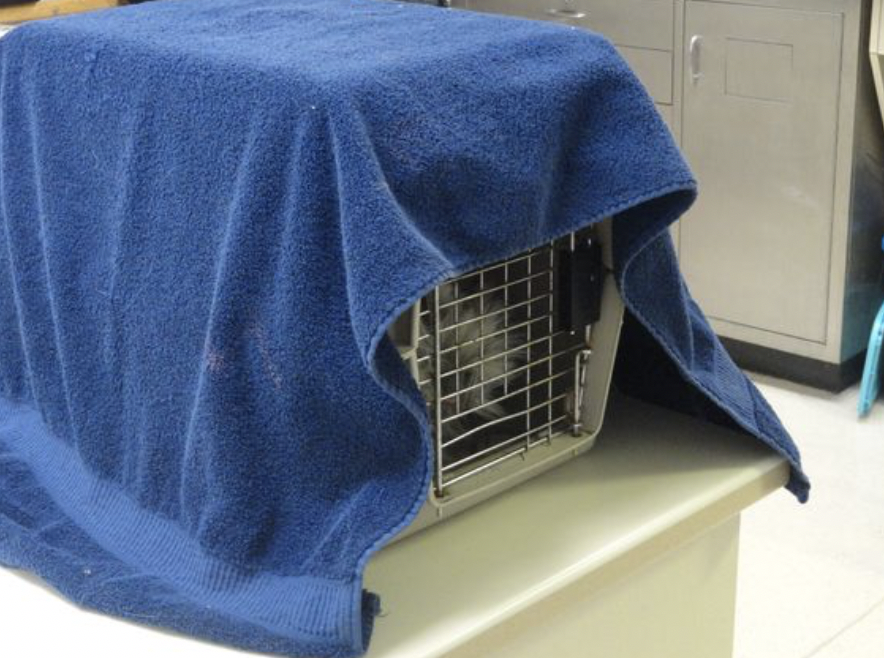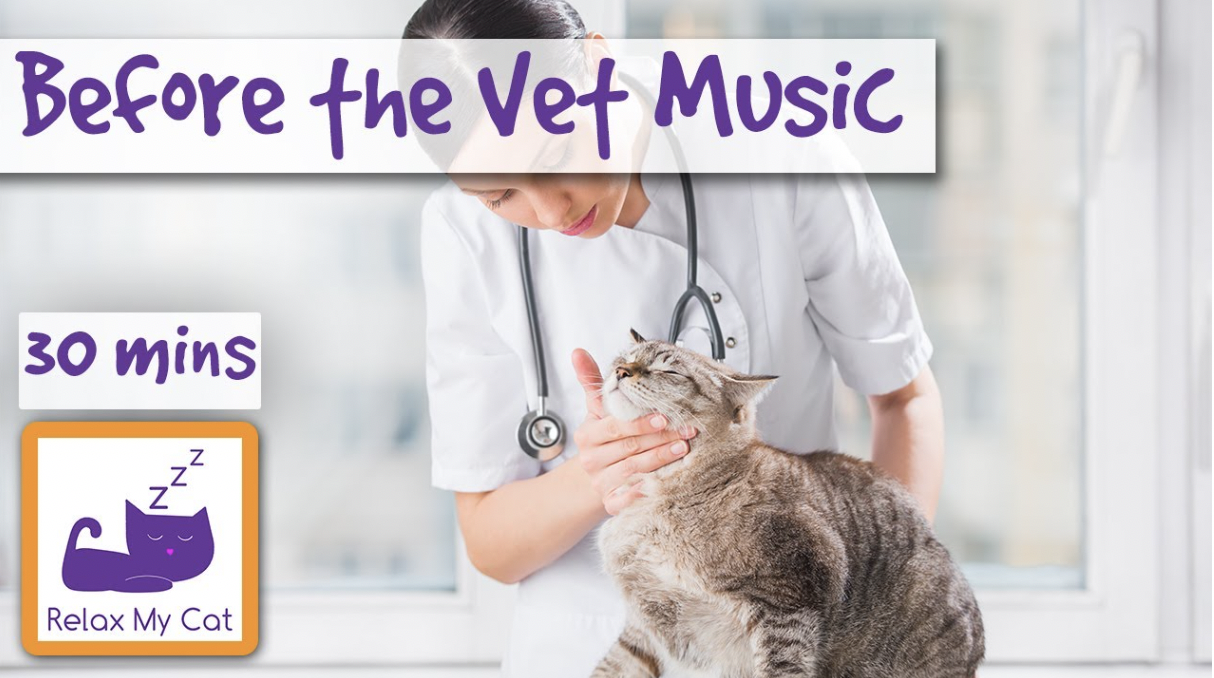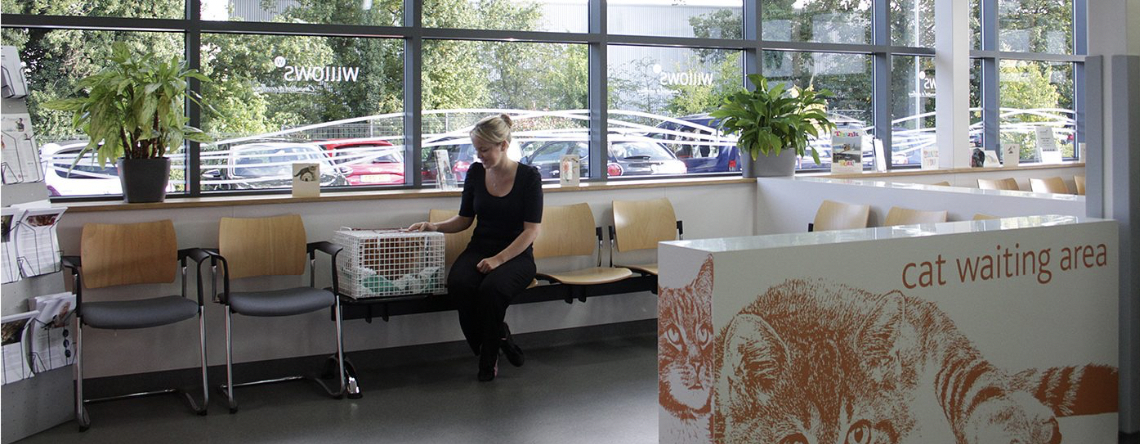How to Get a Scared Cat to the Vet
Thank you for taking the time to be part of our “Keeping Your Cat Content” Blog Series. We hope you have found this series helpful in creating a stimulating environment, problem-solving common household issues, and ultimately strengthening the lifelong bond you share with your feline friend.
In the final installment of this series, we will discuss tips on making travel, especially coming to the veterinarian, easier on you and your pet.
Most household cats only see a pet carrier or the inside of a car when it is time to visit the vet, an experience surely outside their comfort zone. Making matters worse, each appointment visit is accompanied by some form of mild discomforts such as a tightened blood pressure cuff, needle pricks, or even a critical hospital stay. If it were me, each time I saw the carrier, you bet I would run and hide! By following these tips we hope to prevent scary experiences, hopefully making each trip to our hospital enjoyable for both of you.
Tip 1: Select the Right Carrier

Not all carriers are created equal. Select a carrier of the appropriate size. Your pet should be able to turn around in a carrier but not have so much extra room as to slip and slide around. Select a carrier that opens from the sides and top, or has an easily removable top. When you arrive at your appointment, please never tug or pull your cat out forcefully.
Tip 2: Allow the Carrier to sit Out in your home at least 3 days prior to Travel

Introduce your cat to the carrier at least 3 days prior to travel. Dust off the cobwebs or give it a wash to reduce unfamiliar or unpleasant smells. Add a comfy blanket, Feliway (a natural calming pheromone spray), and a few treats to create a comfortable and inviting retreat. Place the carrier in a central part of the house to prevent your pet from feeling isolated while exploring the carrier. Leave the carrier doors open or top off to encourage investigation. If possible, consider the possibility of keeping the carrier one location permanently. If your pet becomes familiar with their carrier and actually views it as a safe and pleasant space- you will have an easier time getting them into it.
Tip 3: Keep the Carrier Flat and Covered

When carrying a cat inside the carrier, cradle it like you would a fragile present, use slow and purposeful movements, holding the carrier safe and secure at chest level. Place the carrier in your car facing away from the windows. Level the carrier by rolling a towel and placing it under the slanted side of the carrier. You may also place a Feliway sprayed towel over the carrier to reduce visual stimuli.
Tip 4: Set the Mood

During travel, play soft classical music and speak in a low tone. High pitched vocal tones increase anxiety, even if your words indicate you are attempting to praise or console your pet.
Tip 5: Arrival

When you arrive at the office, carry your cat inside the carrier carefully at chest level, like a present. Place the carrier on the waiting room bench seat beside you as cats find safety in elevated surfaces. Place a towel from home over the carrier to minimize visual stimuli, or use a towel we provide. Check in with the front desk, and you will be escorted promptly into an exam room. Once there, your nurse will recommend you open the carrier door to allow your cat to explore the room at their discretion according to their comfort level.
Tip 6: Additional Support
If your cat has significant fear and anxiety at the veterinarian, making them too difficult to safely transport or examine, we will recommend you give a dose of anti-anxiety medication prior to their visit. Signs of stress during travel include vocalization, frantic clawing to get out, and soiling of the carrier. Please let your veterinarian know if any of these signs are present in your cat. Oral anti-anxiety medications often work wonders for reducing travel-related stress! Remember, if your pet is less stressed, their physical examination is more accurate. Stress can accelerate the heart rate, blood pressure, temperature, and other vital parameters. Helping to reduce stress in our patients is good medicine. The staff of Longwood Veterinary Center believes veterinary visits should be a pleasant experience from start to finish. You will find it easier to return for preventative care and non-routine visits if you believe your pet is comfortable and anxiety free. If you are interested in learning more about the fear-free initiative visit https://fearfreehappyhomes.com/.
Written By: Tara Corridori, LVT
Edited By: Corrina Snook Parsons VMD
